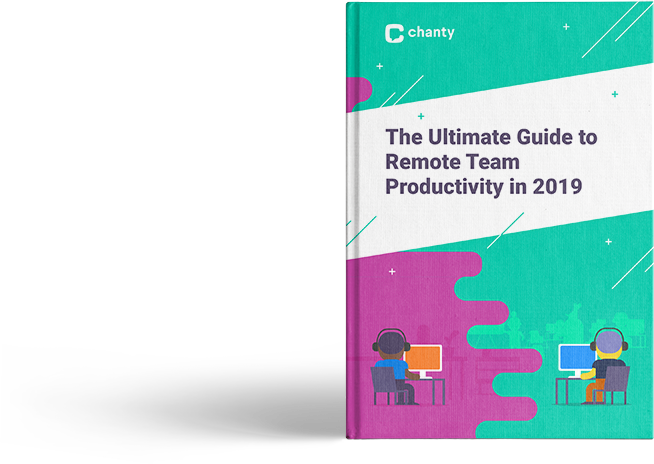Have you heard about the recent workplace buzz? The 4 day work week is a trendy workplace practice that is being talked about a lot. The key goal is to have three days off to achieve a better work-life balance.
However, there are differing views on whether the 4 day work week achieves the desired objectives for both employees and the organization.
What is a 4 day work week?
A four-day workweek allows you to work for 32 hours without compromising on productivity, salary, or company perks. Employees may work Monday through Thursday and have Fridays off, depending on the organization and industry.
It also allows each person to choose their extra day off or establish a company-wide policy for a specific third day off, such as Monday or Wednesday.
The advent of less working schedule
The concept of completing more work in less time is not new. We should all thank Ford Motor Company for our current five-day rather than six-day workweek. It all began as a simple experiment in July 1926, and eventually turned into a company policy by September of the same year.
Since at least the 1990s, the United States has been experimenting with a four-day workweek. Another experiment was conducted in 2004, when the city of Spanish Fork, Utah, introduced a four-day workweek for the city employees.
Pros of a 4 day work week
From 2008 to 2011, Utah’s state government experimented with a 4/10 timetable. Even before the pandemic, the four-day working week was gaining a lot of attention, as more such job openings were offered in 2018 and 2019.
Companies large and small are experimenting with the idea of a shorter workweek across the world. Let’s have a look at the benefits of the new trend:
Cost savings
A four-day workweek can help everyone save money. The most obvious benefit is that operating costs would be significantly reduced as offices would be closed one extra day per week.
Additionally, employees would spend less for commuting and would see cost savings in other areas like coffee and lunch breaks during the day.
Increased productivity
Sanford University did an in-depth investigation on the relationship between hours worked and productivity through which they discovered a clear correlation between the two. Overworked employees are less productive than those who work on a normal week. The same refers to presenteeism.
Perpetual Guardian, a New Zealand-based corporation, performed a 4-day workweek pilot study. Employees not only maintained the same level of productivity, but also improved job satisfaction, collaboration, work-life balance, and organizational loyalty. Employees were also less stressed, with a drop from 45 percent to 38 percent.
Achieving a better work-life balance
Employees gain an additional day to accomplish other things in their lives by working fewer days, whether to take care of personal and family commitments or enjoy some leisure time.
The pandemic brought with it some “great resignations” in which burned-out workers, particularly Millennial and Gen Z workers, quit their jobs in large numbers. This can be avoided in the future if workers are given the mileage they require from fewer workdays. In comparison to the typical 5:2 ratio, a four-day workweek promotes a more equal balance between days off (three non-work days) and days on (four workdays).
Workplace distractions
In 2018, Andrew Barnes, the owner of Perpetual Guardian, a law practice in New Zealand, implemented a four-day workweek. Employees chose to construct phone lockers, soundproof meeting locations, and cut meetings short.
Barnes discovered that despite working fewer hours, employees spent 35% less time on non-work websites. Nonwork duties were considerably less likely to intrude on the workplace because employees had more time to address their household and life responsibilities outside of work.
Challenges of a 4 day work week
Employees’ wages and benefits may not always be maintained if they work four-days a week. The Los Angeles Times and Stanley Black & Decker, for example, are said to have implemented a four-day workweek as a cost-cutting strategy and reduced employee pay by 20%. Short-term trials that show success with a four-day workweek may not reflect long-term results.
Customer contentment
The Utah trial, which had excellent environmental results as well as employee and employer benefits, was forced to close due to low consumer satisfaction. Customers complained that they could not get government services because the offices were closed on Friday.
However, customer satisfaction issues can be solved by utilizing technology like chatbots and AI-powered websites, which would provide customers with an alternative to relying on office-based staff employees.
It may not suit every business model
Unfortunately, a four-day workweek is not suitable for every company. It’s only a viable choice for businesses that can convert their entire operation to a new style of functioning. Adopting a new style of working is a major step, so think about whether a four-day week is an appropriate choice for your firm.
Employees may work the same hours anyways
Certain jobs just take longer to finish, and others may not be suitable for working fewer hours. Workers in a four-day workweek trial in France ended up putting in the same hours regardless. The only distinction? The corporation had to pay overtime, which was an additional cost.
Your competitors may take advantage of you skipping a work-day
Regardless of whether you observe significant increases in employee happiness, the prospect of eliminating an entire weekday from your calendar will appeal to your competitors. If they do not want to follow the trend, they now have a whole day to commit to surpassing your company. They can choose a day when the majority of their competitors have a day off and contact their critical clients and consumers.
The 4 day work week model in practice
A lot of companies throughout the world have successfully implemented a four-day workweek for a year or more, and the Japanese government has supported it as a national policy. It’s not a novel concept, but it appears to be receiving more attention since the COVID-19 pandemic prompted a sweeping reevaluation of how we work, including a significant increase in work-from-home and hybrid office use.
Bolt, a technology firm, was one of the most recent companies to start a four-day working week in November 2021. Kickstarter, a New York-based crowdfunding platform, also jumped on board earlier in 2021 to test the four-day workweek.
4 Day Week Global is now running a campaign to encourage more businesses to join. In April 2022, the platform will begin a six-month coordinated trial.
“We’re shifting the work paradigm away from quantifying how much time individuals spend in the office and toward what people really produce and what goals we’re aiming to achieve over the course of the week,” said Joe O’Connor, global pilot program manager at 4 Day Week Global.
Should you adopt the 4 day work week?
Firstly, it depends on whether or not your industry permits it. Some businesses, such as tourism, transportation, healthcare, and law, find it far more difficult to implement a 4 day work week.
The second deciding criterion is whether your firm can afford such a structure, which is determined by how tough the competition is, how secure the organization’s market edge is, and how strong the profitability is. For innovative and highly lucrative businesses, implementing a 4 day work week is significantly easier.
The last point to consider is the firm’s culture. It’s probably not the ideal fit if the culture emphasizes hard effort, long working hours, and competitiveness. The 4 day work week, on the other hand, can help you attract the greatest talent and get the greatest results out of people if your culture values better work-life balance and flexible work schedules.
If you decide to try out the 4 day work week, it is advisable to first do it on a smaller scale before going company-wide, and be sure to follow these steps:
- Determine what you want to accomplish with the 4-day workweek on a strategic level.
- Create a policy that allows for flexibility in the workplace with defined guidelines.
- Make sure that all of your employees are aware of the new policy.
- Make sure you’re using time-and-attendance software that can handle a four-day workweek.
- Make it an option for all employees if it works on a smaller scale.
Shorter workweek benefits
Many businesses and employees have benefited from a shorter workweek, including higher productivity and more time to pursue personal goals and aspirations. A four-day schedule, on the other hand, is not appropriate for all industries, enterprises, or individuals. It also won’t help with a toxic environment or an unpleasant job.
The global reassessment of labor spurred by the COVID-19 pandemic has sparked renewed interest in the concept of a four-day workweek. To make it the new normal, however, a mindset and attitude shift that deemphasizes work will be required, as well as a critical look at job activities that may be digitized, deprioritized, or abandoned, as well as combating discomfort and resistance around change.












Wonderful read! Well thought out and loving the buildup.
Well done!